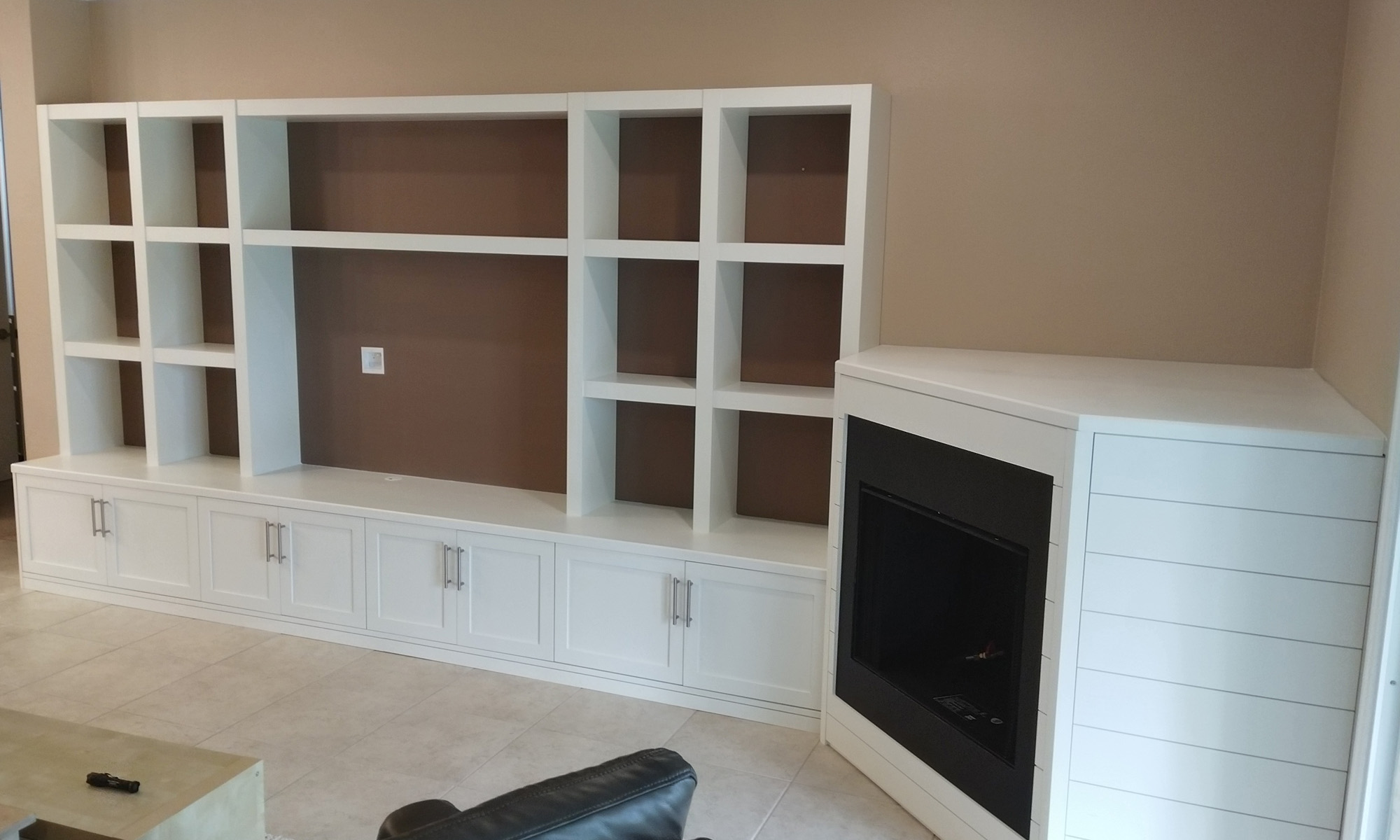A lock-rabbet joint, while not as strong as a dovetail joint, is still a strong, attractive and relatively easy joint to make. It is ideally suited for drawers. It can be made on either a table saw or router table.
As with much power tool woodworking, the time is in the set up. Once the set up is done, repeating the cut for any number of drawers is a quick process.
The first step is to mill your lumber. The picture below shows the pieces for one drawer box. The sides are 1/2″ thick maple, the front and back are 3/4″ maple. The length of the drawer front and back pieces is the same as the finished dimension of the drawer. The lengths of the drawer side pieces is half an inch less than the finished dimension of the drawer. As always, I have also prepared a couple of 1/2″ and 3/4″ scrap pieces to use for test cuts during the set up. It’s also a good idea to mark the outside face of each piece with chalk to avoid confusion.
With a 1/4″ dado blade in the table saw, cut a 1/4″ x 1/4″ groove down the side of each piece 1/4″ from the edge of the piece. This is the groove that will accept the drawer bottom, which is 1/4″ thick sheet material. Cutting the groove now gives you another visual aid as to which side is the inside of the drawer as well as which edge is the top and bottom.
Using one of the drawer sides as a gauge block, raise the 1/4″ dado blade to 1/2″ high. This is a rough adjustment and the blade height will be fine tuned in the next step.
The next step can be made by using a tall auxiliary table saw fence or with a tenoning jig as shown in the picture below. Using a scrap piece of wood and the blade at 1/2″ height, make a cut.
To confirm the blade is at the correct height, butt one of the drawer sides into the groove just cut. The drawer side should fit flush with the edge of the scrap piece, as in the picture below. If the drawer side is proud of the edge of the scrap piece, then the cut needs to be deeper and the blade should be raised. If the edge of the scrap piece is proud of the drawer side, then the cut is to deep and the blade should be lowered.
Now that the height of the blade is set, the distance from the tenoning jig to the blade needs to be set to 1/4″. I like to use a brass set up gauge for this.
With the outside face towards the tenoning jig, cut a 1/2″ x 1/4″ groove in the end of each side of the front and back pieces of the drawer.
Using either an auxillary fence on the table saw, or a piece of wood held with a fence clamp as shown, slide the table saw fence so that the piece of wood just touches the blade.
 Lower the blade to 3/8″ of an inch.
Lower the blade to 3/8″ of an inch.
With the outside face of the piece up, crosscut each end of the front and back pieces of the drawer.
 The front and back pieces of the drawer are now complete.
The front and back pieces of the drawer are now complete.
Still using either a scrap piece of wood held by a fence clamp, set the height of the blade to 1/4″ and the distance of the blade from the scrap piece of wood to 1/4″. Then make a crosscut in one of the 1/2″ thick pieces of wood you prepared.
The astute among you will notice that I made a large block of wood to use as my “mini auxillary fence”. The one in the previous image did not reach all the way down to the table saw bed and made some set ups difficult.
The really astute among you will also notice that the position of the “mini auxiliary fence” in the shot below is far from ideal. Somewhere in the midst of making the new auxiliary fence, performing the cross-cut and then staging everything for the photo I had the auxiliary fence in the wrong position. My bad. Once the distance between the fence and the blade is established, the auxiliary fence should be moved back behind the blade, where it can perform it’s function as a stop block but not run the risk of binding the piece as you perform the cross cut.
This image shows the correct position of the auxiliary fence/stop block relative to the blade while performing a cross cut.
Proceeding on, the image below shows the results of the test cut. The piece is sitting proud of the edge of the drawer front by a smidgen. To correct this the blade needs to be raised by a corresponding smidgen.

The correct fit after raising the blade is shown below.
Once the correct fit is established, the cross cut is made on each end of both drawer sides with the outside of each drawer side facing up.
All that needs to be done is to perform a dry assembly of the drawer, establish the size of the drawer bottom, cut it and then a dry assembly of the drawer with the bottom in place.
When gluing the drawer together, checking the diagonals match is an easy way to ensure that the box is square. I find the square check for tape measures really convenient for this.
































































